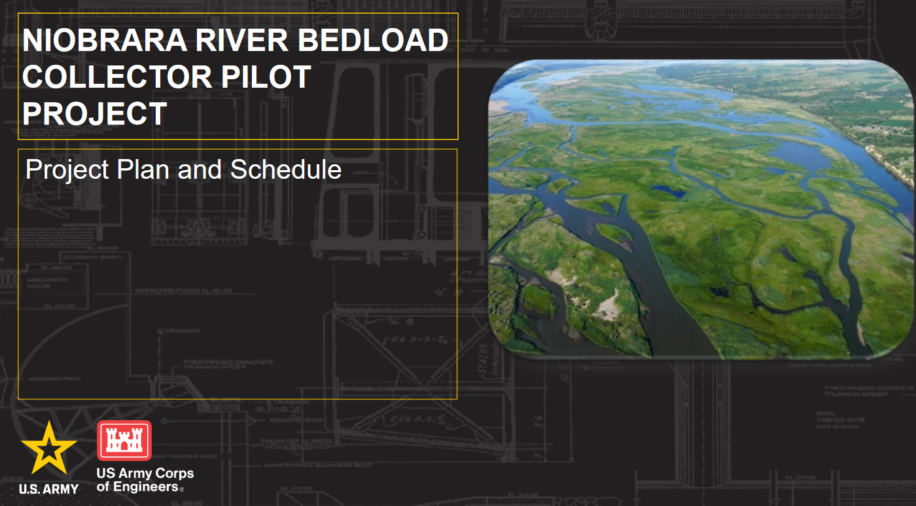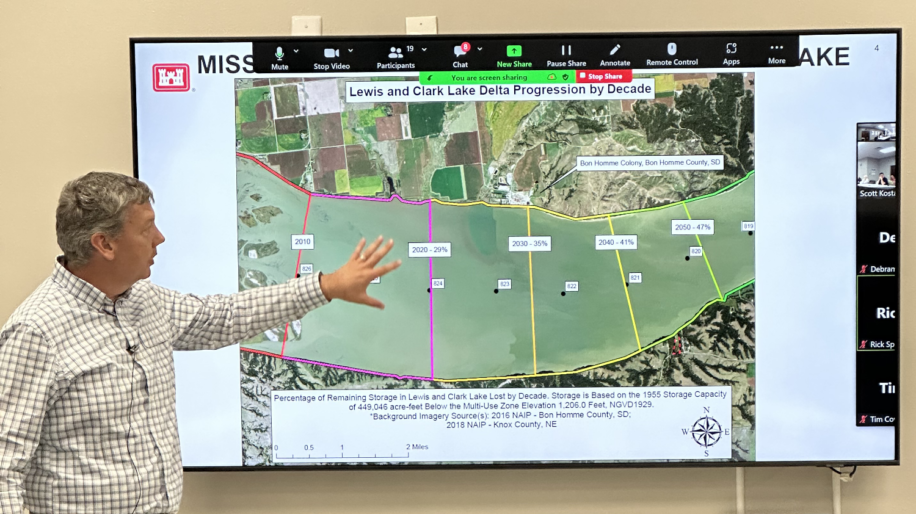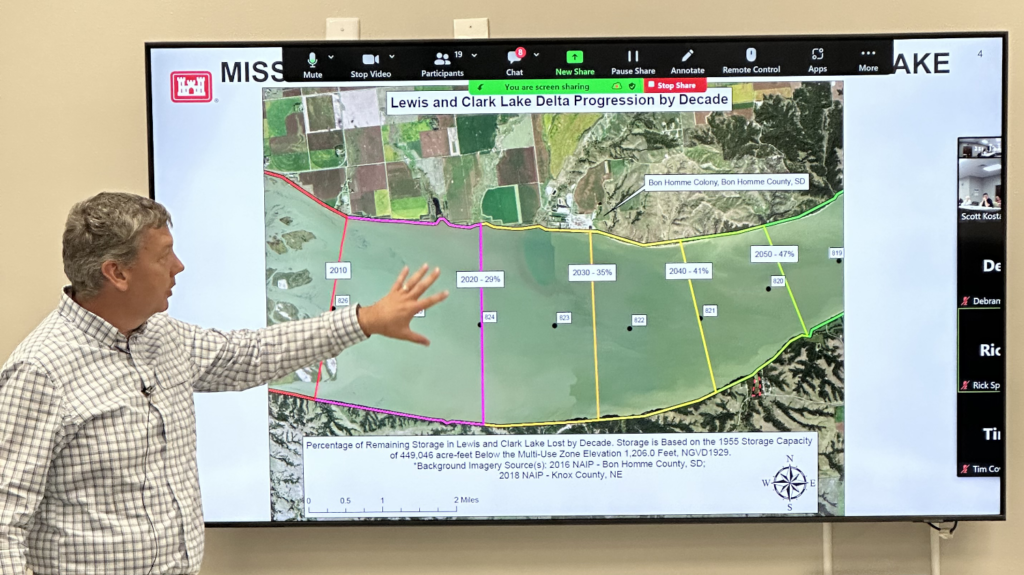The Missouri Sedimentation Action Coalition held its 23rd Annual Meeting on May 2 in Niobrara. The recording of the keynote presentation is now available at MSAC’s YouTube Channel and here on its website, below.
Paul Boyd, hydraulic engineer – River and Reservoir Engineering Section of the U.S. Army Corps of Engineers (USACE) – Omaha District, provided an update on the sediment collector pilot project planned for at least a week-long installation on the Niobrara River later this summer. The project, funded by the Corps’ Regional Sediment Management (RSM) Program, is coordinated by USACE Omaha District and in collaboration with the Corps’ Engineering Development and Research Center (ERDC) and the Missouri Sedimentation Action Coalition (MSAC).
For decades, the Niobrara River with its nearly unlimited sand supply has been the single, largest contributor of the sedimentation building up in the Lewis and Clark Lake delta. MSAC sees this short-term collector pilot project with the potential of sparking long-term results. Over the past several years the group has focused on the Lewis and Clark Lake region as the waterbody behind Gavins Point Dam will be the first of the six Missouri River mainstem reservoirs to fill with sediment if no action is taken. Phase 2 of a Section 22 Planning Assistance to States study requested by MSAC to develop a sediment management plan for this region was released at the end of 2023. Next steps were also discussed at the annual meeting.
MSAC elected a new Board of Director (Class I – Governmental Entities), Alan Wittmuss, of Vermillion. Tim Cowman of Vermillion did not seek re-election. Kersten Johnson, of Sioux Falls, Class II-Organizations, was re-elected to a 3-year term.
Wittmuss is the Assessment Team Leader for Watershed Protection Program, which is part of the South Dakota Department of Agriculture and Natural Resources (SDDANR). He has both a master’s and bachelor’s degree in Biology with an emphasis on Aquatic Ecology from the University of South Dakota.
As an environmental scientist, Alan has worked in lake and stream watershed assessments for over 30 years focusing on surface water quality monitoring and total maximum daily load (TMDL) development. The SDDANR Watershed Protection group works to assess, improve, restore, and maintain the health of South Dakota waters by providing local government bodies, natural resource management agencies, and the general public with information, funding, and technical assistance for watershed assessment and restoration projects.
Three individuals were recognized as Friends of the River. MSAC applauded the years of contributions that Tim Cowman, of Vermillion, Larry Weiss, of Sioux Falls, and Mark Simpson, of Niobrara have all made and continue to make toward MSAC’s mission.
MSAC, a 501c3 nonprofit organization, was organized in 2001. It is dedicated to educating the public and to promoting the intelligent use of all available programs and funds to alleviate the sedimentation-caused problems of the Missouri River main-stem reservoirs. MSAC supports a sustainable approach to reservoir management, envisioning doing what is necessary to extend the storage capacity of the reservoir as far into the future as possible recognizing the value of our most precious resource – water.



